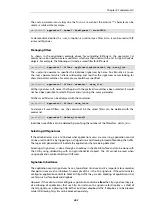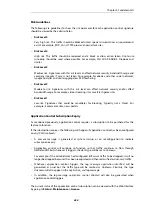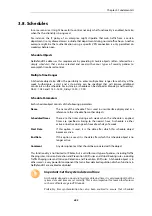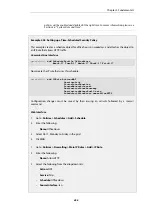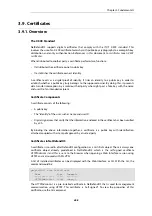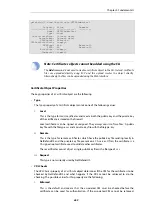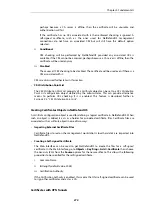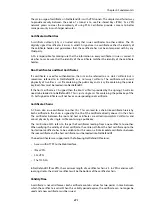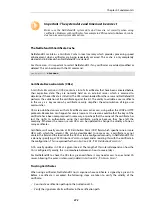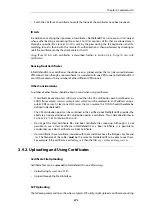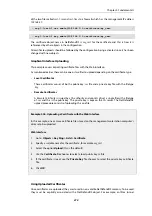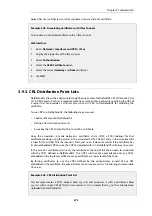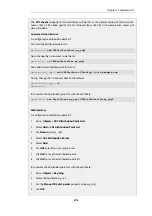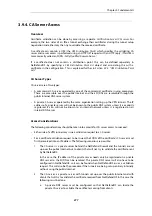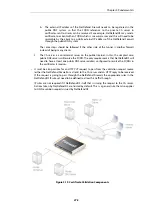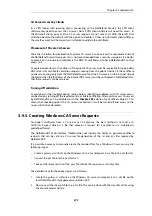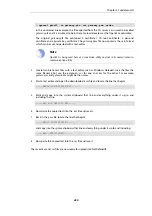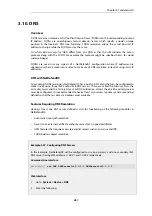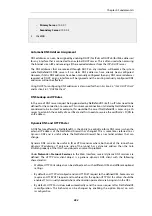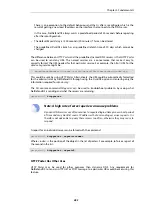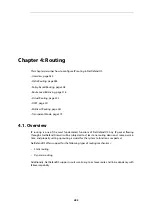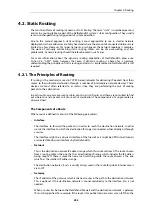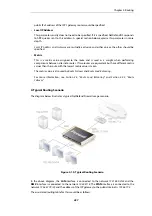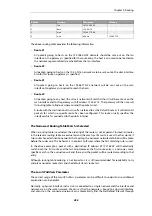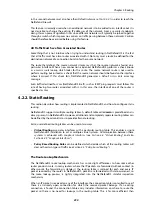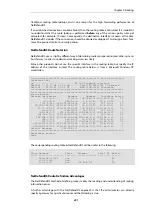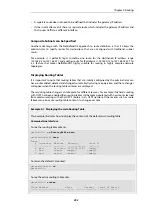
3.9.4. CA Server Access
Overview
Certificate validation can be done by accessing a separate
Certifícation Server (CA) server
. For
example, the two sides of an IPsec tunnel exchange their certificates during the tunnel setup
negotiation and either may then try to validate the received certificate.
A certificate can contain a URL (the
CRL Distribution Point
) which specifies the validating CA
server and server access is performed using an HTTP
GET
request with an HTTP reply. (This URL is
more correctly called an FQDN -
Fully Qualified Domain Name
.)
If a certificate does not contain a distribution point, this can be defined separately in
NetDefendOS by specifying a
CRL Distribution Point List
object and associating this with a
certificate in the configuration. This is explained further in
Section 3.9.3, “CRL Distribution Point
.
CA Server Types
CA servers are of two types:
•
A commercial CA server operated by one of the commercial certificate issuing companies.
These are accessible over the public Internet and their FQDNs are resolvable through the
public Internet DNS server system.
•
A private CA server operated by the same organization setting up the VPN tunnels. The IP
address of a private server will not be known to the public DNS system unless it is explicitly
registered. It also will not be known to an internal network unless it is registered on an
internal DNS server.
Access Considerations
The following considerations should be taken into account for CA server access to succeed:
•
Either side of a VPN tunnel may issue a validation request to a CA server.
•
For a certificate validation request to be issued, the FQDN of the certificate's CA server must
first be resolved into an IP address. The following scenarios are possible:
1.
The CA server is a private server behind the NetDefend Firewall and the tunnels are set
up over the public Internet but to clients that will not try to validate the certificate sent
by NetDefendOS.
In this case, the IP address of the private server needs only be registered on a private
DNS server so the FQDN can be resolved. This private DNS server will also have to be
configured in NetDefendOS so it can be found when NetDefendOS issues a validation
request. This will also be the procedure if the tunnels are being set up entirely internally
without using the public Internet.
2.
The CA server is a private server with tunnels set up over the public Internet and with
clients that will try to validate the certificate received from NetDefendOS. In this case the
following must be done:
a.
A private DNS server must be configured so that NetDefendOS can locate the
private CA server to validate the certificates coming from clients.
Chapter 3: Fundamentals
277
Summary of Contents for NetDefendOS
Page 30: ...Figure 1 3 Packet Flow Schematic Part III Chapter 1 NetDefendOS Overview 30 ...
Page 32: ...Chapter 1 NetDefendOS Overview 32 ...
Page 144: ...Chapter 2 Management and Maintenance 144 ...
Page 284: ...Chapter 3 Fundamentals 284 ...
Page 392: ...Chapter 4 Routing 392 ...
Page 419: ... Host 2001 DB8 1 MAC 00 90 12 13 14 15 5 Click OK Chapter 5 DHCP Services 419 ...
Page 420: ...Chapter 5 DHCP Services 420 ...
Page 573: ...Chapter 6 Security Mechanisms 573 ...
Page 607: ...Chapter 7 Address Translation 607 ...
Page 666: ...Chapter 8 User Authentication 666 ...
Page 775: ...Chapter 9 VPN 775 ...
Page 819: ...Chapter 10 Traffic Management 819 ...
Page 842: ...Chapter 11 High Availability 842 ...
Page 866: ...Default Enabled Chapter 13 Advanced Settings 866 ...
Page 879: ...Chapter 13 Advanced Settings 879 ...

